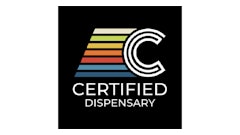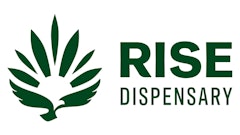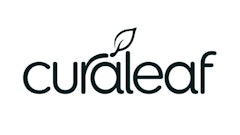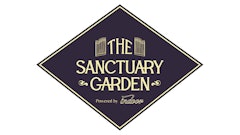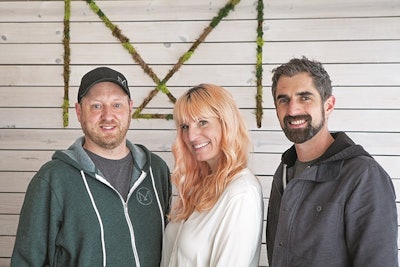
This article originally appeared in the June 2018 issue of Cannabis Dispensary. To subscribe, click here.
Friendly Street in the South Hills of Eugene, Ore., reflects its name: Children can be spotted playing in parks, single-family homes line the street, and couples and families mosey about their days. Most cannabis professionals might not think this residential setting is ideal for a dispensary, but despite the non-traditional surroundings, Friendly Street is where Moss Crossing’s three main owners—Heidi Fikstad (pictured middle), Sylvan Magnus (pictured right) and Cam McNeeley (pictured left)—decided to lay down their roots. The dispensary has since become one of the highest-ranked in Oregon, according to Leafly. (The business has a 4.9/5 rating on the consumer website.)
In this fast-paced interview, Fikstad, Magnus and McNeeley discuss how their location has helped define their business, how working with equity partners is different than loan partners, their plans (and concerns) for expanding in Oregon’s tumultuous market, and more.
Brian MacIver: How has being in a residential neighborhood, away from Eugene’s downtown, given you an edge over your competition?
Cam McNeeley: It’s great because we’re out of the downtown, oversaturated market where you, by virtue of being there, are part of the problem no matter what you’re doing individually. It’s nice to be out of that little rat race that’s causing city council problems and just over-saturation of [the market].
Heidi Fikstad: Had we not gotten this location or something similar, I don’t think we would have opened this shop. We’re in a friendly neighborhood in the South Hills. It’s more of a family situation here. Those are the types of people that maybe wouldn’t feel super comfortable having all their business partners or people they work with see them walking into a dispensary. Some people feel more comfortable being a little more discreet.
We’re also right next door to a hippie grocery store, which is pretty awesome if you’re trying to get your cannabis and your “healthy munchie” on.
McNeeley: Many of the health-conscious, organic [crowd] keep our quality standards in line because they demand that level of Clean Green Certified and [to know] what type of grower [our products] come from. It’s important to a lot of our customers.
MacIver: Moss Crossing positions itself as a cannabis dispensary and a lifestyle brand. What does being a lifestyle brand mean to you?
Fikstad: [It] is about connecting with the customer on a more emotional level.
There are a lot of cannabis consumers out there that don’t really identify with what is thought of as the “stoner lifestyle." And we were those consumers. We would walk into a dispensary and there weren’t accessories that we wanted to use ourselves, there weren’t T-shirts that we would actually wear on the street. I think our target audience, as a lifestyle brand, is people walking into our shop and seeing the things we are selling integrating into their daily lives. That’s our brand’s goal, to subtly incorporate into people’s lives in a way that the traditional idea of cannabis brands doesn’t accomplish.
MacIver: What has Moss Crossing done to survive and try to remedy Oregon’s market glut?
Sylvan Magnus: We try to keep our blinders on and do what we set out to do originally: create something different and special and unique. Because we set ourselves apart and really have a respectable brand and name in the industry, a lot of companies seek us out and want to be on our shelves and be a part of what we’re doing. That gives us an edge as far as working with some of the best producers and manufacturers in the state.
Fikstad: Something that is somewhat unique to us is that we come from a background of being growers. So, we understand what goes into growing, and we understand how expensive and difficult it is. In our purchasing habits, we’ve never tried to drive the price below what is reasonable for these farms to survive. I think that helps us stand out, and it helps the market, ultimately, to actually pay what this flower is worth instead of going for those $2 or $3 grams.
To read the full article in Cannabis Dispensary's June 2018 issue, click here.
Top photo courtesy of Moss Crossing















